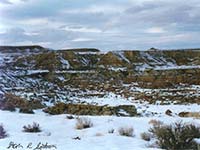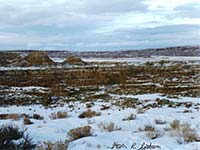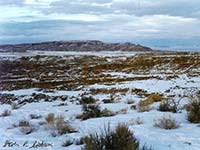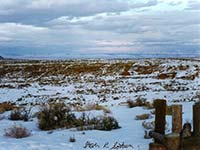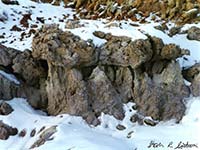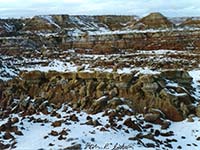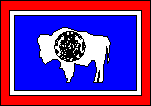I took the next three pictures on New Year's day, 1994 while I was on my way
back home to Michigan. Click on them to get a better view.
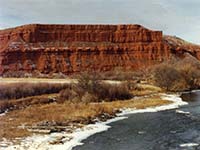
This red cliff located on Nowood creek just outside of the town of Ten Sleep
Wyoming is a favorite of mine.
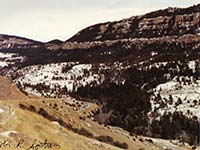
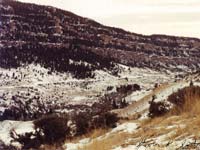
Here are left and right views of Ten Sleep canyon taken from the same spot. At
the bottom of the canyon is Ten Sleep creek. The switchbacks in the highway can
be seen in the picture on the left.
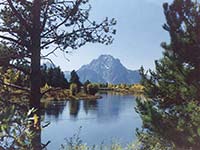
This is quite a picturesque view of the Tetons. This picture was taken by Paul
Martz.
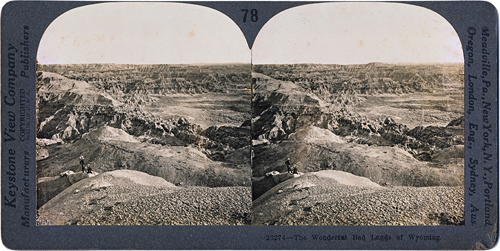
The Wyoming Badlands in Stereo! For help viewing this image,
click here.
THE WONDERFUL BAD LANDS OF WYOMING
East of the Rocky Mountains is an open, unforested land known as the Great
Plains. Most of this region is especially well suited for raising grain, and
in some sections are extensive beds of lignite. In portions of the Great
Plains, especially in South Dakota, Wyoming and Nebraska are areas known as
the Bad Lands.
This picture gives us a view of the Bad Lands of Wyoming. The soil and
subsoil of these lands are unusually soft, consisting largely of clay and
shale. The rainfall in the region is very light. When it does rain, however,
it comes as from a cloud-burst, in great abundance and lasting for a short
period. The water cuts deep into the soft material and carries the soil
away, carving all kinds of strange shapes and fantastic forms. There is one
particular area called Toadstool Park, because of its resemblance to a
collection of mammoth toadtools.
As one can well imagine from this view, these rough lands are very difficult
for traveling; hence their name "Bad Lands". They are extremely interesting
places to visit. In the clay have been found bones of some of the largest
animals ever known to have existed in the history of the world.
In a moist climate with an abundance of vegetation these "bad lands" cannot
occur. Roots help to bind the soil together. In our own neighborhood we may
see cuts in clay banks, where there is little or no plant growth, that are
furrowed and washed out by hard rain. It is similar conditions, going on for
ages, which have made the great troughs and terraces in this barren waste.
Copyright by The Keystone
View Company
